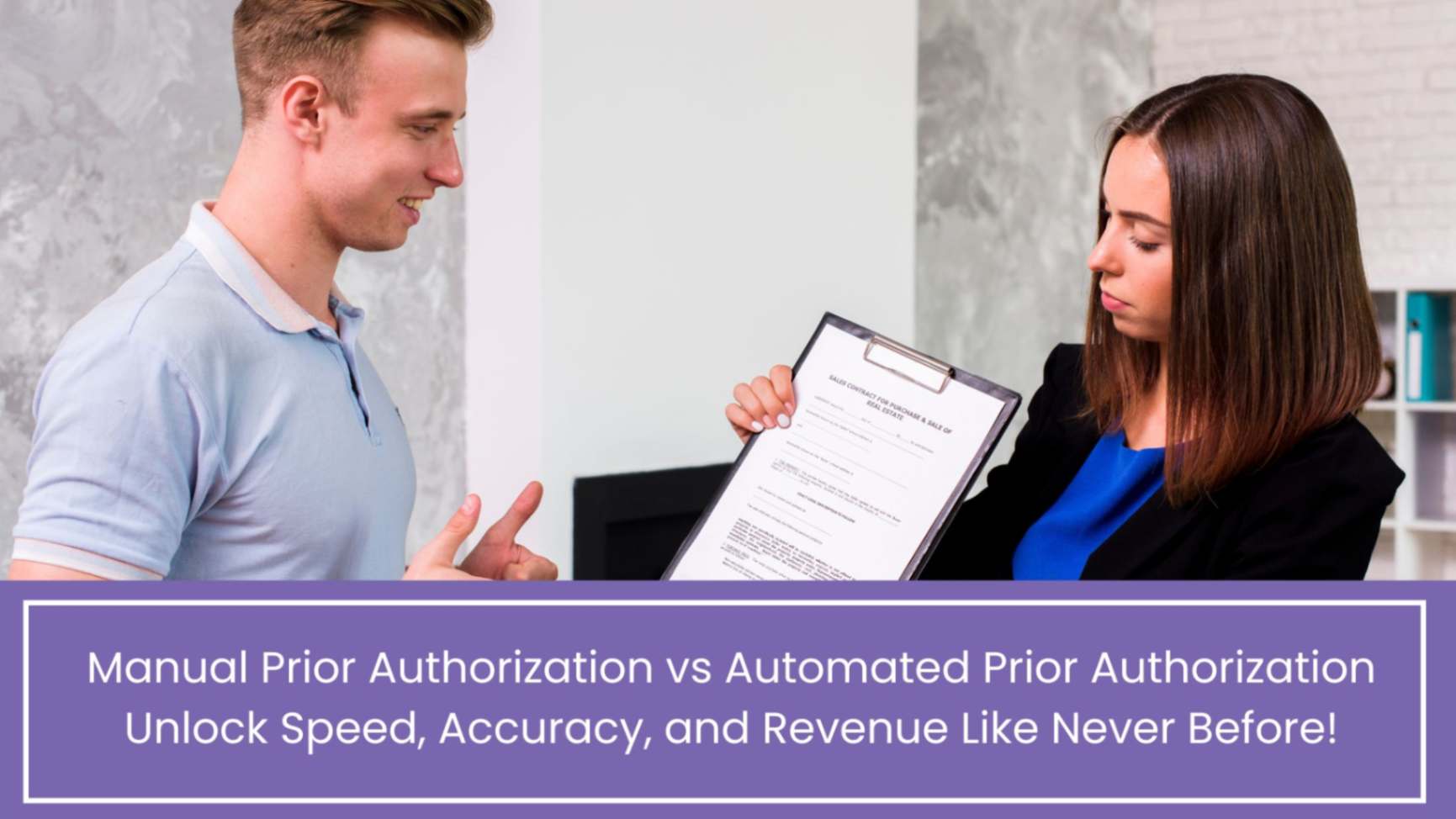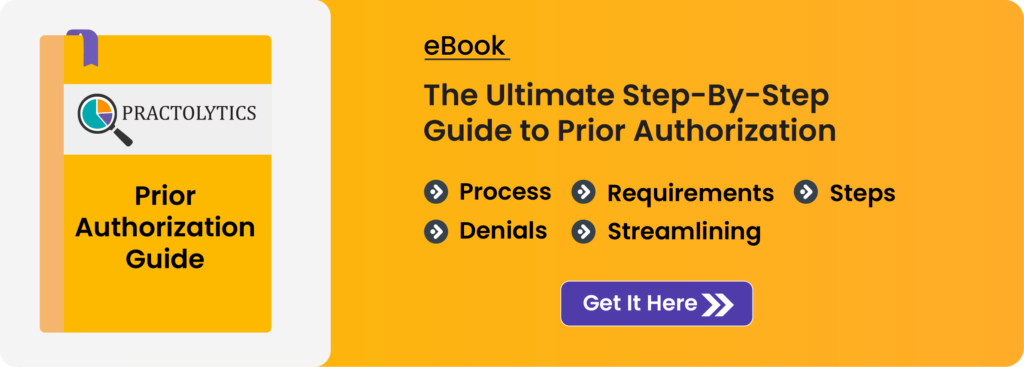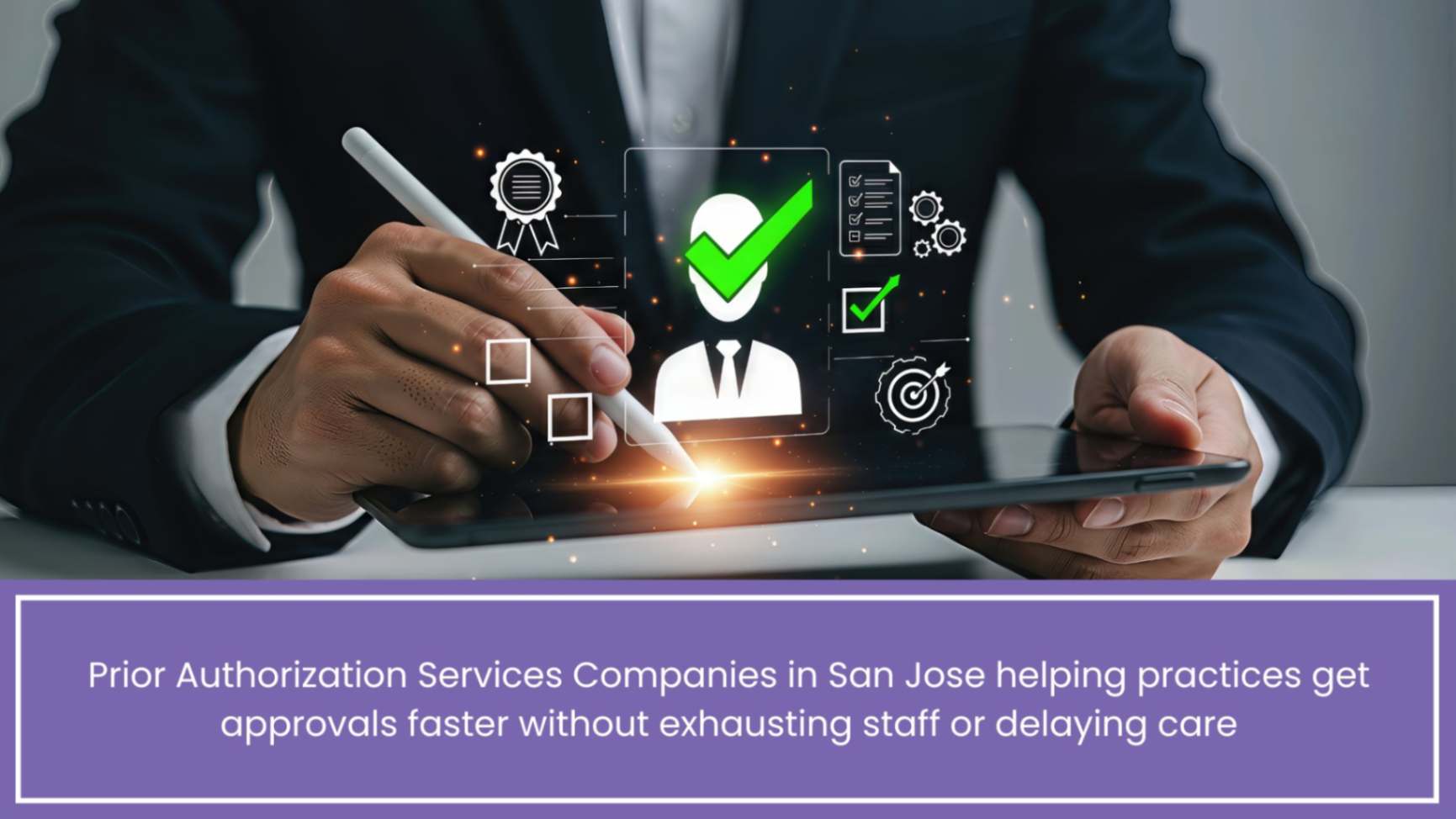Manual Prior Authorization Vs Automated Prior Authorization
The healthcare business is constantly evolving. It faces challenges with increased administrative costs. It also faces challenges with complicated regulatory frameworks and the ongoing need to optimize financial performance. This complex climate presents a unique opportunity for AI to transform RCM. AI is a game changer in this context. AI capabilities are transforming the sales cycle. They are leading to new levels of efficiency, accuracy, and profitability.
Table of Contents
Top 7 Benefits of Switching to Automated Prior Authorization
Prior authorizations have historically hindered healthcare efficiency, leading to significant delays in patient treatment and a high volume of claim rejections. Manual processes are resource-intensive. They require several hours of phone calls, faxes, and portal navigation. Automated Prior Authorization Software thrives in this area. It offers several advantages:
- AI-powered systems can rapidly check payer rules. They can also auto-fill forms and submit requests online, reducing approval periods.
- Increased Accuracy and Fewer Errors: Automation reduces human mistake in data entry and form completion, ensuring that requests are successfully sent the first time. AI can even detect missing or erroneous information before to submission.
- Large Cost Savings: Companies may reallocate workers to higher-value tasks by reducing physical labor, phone calls, and rework. This would result in a large reduction in operating costs.
- Faster authorization processes lead to an improved patient experience. This results in higher pleasure and improved health outcomes.
- Automated methods improve employee productivity. They also boost morale by lowering administrative duties and allowing employees to concentrate on more difficult jobs.
- Automated Prior Authorization software keeps up with changing payer standards and laws. This reduces the possibility of audits and fines while also ensuring compliance.
- Quicker reimbursement improves cash flow and financial stability. Payouts are accelerated and denials are decreased in order to accomplish this.
Manual vs. Automated Prior Authorization: Which Is Right for Your Practice?
One major paradigm shift is the move from manual to automated prior authorization.
- Are manual prior authorizations still worthwhile in 2025? In brief, no. By 2025, relying only on manual processes will be more untenable. The administrative load, high error rates, long response times, and influence on patient care make it an expensive and inefficient strategy. While some particularly complex or uncommon authorizations may still necessitate manual intervention, a practice that does not adopt automation for the bulk of its PAs would face considerable financial and operational costs.
- Automated Prior Authorization uses technology to streamline the entire PA operation. Prior Authorization Automation Tools can interact with EHRs, automatically verify medical necessity, submit requests to payers through direct links or clearinghouses, and follow statuses in real time. This hands-free approach significantly decreases workload while increasing efficiency.
For the vast majority of healthcare practices, large or small, moving towards automated prior authorization is not just “right,” it’s essential for survival and growth. The ROI on Automated Prior Authorisation Software is typically quick, given the high costs associated with manual denials and delays.
How Automated Prior Authorization Software Reduces Claim Delays
The direct link between effective prior authorization and reduced claim delays is undeniable. A claim for a service that lacks prior authorization or contains errors will be refused. This denial results in a lengthy and resource-intensive appeals process. How Automated Prior Authorization Software Reduces Claim Delays is multifaceted:
- Proactive Verification: The program detects authorization needs before the service is given, preventing services from being conducted without proper approval.
- Instant Rule Checks use AI to analyze payer regulations and medical necessity criteria. This ensures requests meet all requirements in real time.
- Automated Submission: Requests are processed online. This eliminates postal delays, fax issues, and phone tag.
- The system monitors the status of submitted authorizations. It then alerts personnel to approvals, pending requests, or denials that require attention.
- Contextual Documentation Prompts: Some advanced tools prompt users to supply specific clinical documentation required by the payer, ensuring that all necessary information is included in the initial submission.
- These capabilities prevent rejections at the source, ensuring a higher clean claim rate and significantly accelerating the revenue cycle.
A Step-by-Step Guide to Automating Your Prior Authorization Workflow
Automating your PA workflow may be difficult, but a systematic approach may make it seamless:
- Evaluate Current Workflow: Plan out your current manual PA process. Identify bottlenecks, common errors, and regions with the highest administrative burden (Prior Authorization Process Challenges).
- Examine Automated Prior Authorization Software. Look for systems with powerful features like real-time eligibility checks, broad payer rule libraries, and multi-payer connection.
- Prioritize integration with your EHR system. Choose EHR-integrated prior authorization software. In order to get clinical notes, order information, and patient details, this is essential. It gets this data straight from the EHR, saving time-consuming data entry.
- Phased implementation: Begin with a trial program for a specific service line or payer. This enables you to get comments and improve the process.
- All relevant staff members, including front desk, clinical, and billing staff, should be trained at any cost. Ensure that they understand how to use the new system and their roles in the automated workflow.
- Track and Improve: Keep a close eye on important data including PA approval rates, turnaround times, and denial rates. Improve your automated processes and identify areas for improvement with the help of this information.
- The payer rule library of the software solution you have chosen should be updated on a regular basis to meet evolving requirements.
Is Your Practice Ready for EHR-Integrated Prior Authorization?
EHR Integrated Prior Authorisation Software is a game-changer for practices. If your practice relies heavily on an EHR for patient records and clinical documentation, then you are ideally positioned to benefit. Readiness factors include:
- A stable EHR system is critical.
- For automation to be successful, data quality is essential. Effective automation requires complete and accurate EHR data.
- Employee Buy-In: For a transition to go well, training and education regarding the advantages of the change are essential. This guarantees a smooth transition.
- Commitment to Change: Automating PAs necessitates a shift in process and thinking.
The benefits of EHR Integrated Prior Authorisation Software are immense: seamless data flow, reduced duplicate entry, improved accuracy, and a more unified view of patient and financial information. This integration ensures that medical necessity is clearly communicated, as clinical data directly supports the authorization request.
Automated vs. Manual Prior Authorizations: Cost, Compliance & Speed Compared
When comparing automated vs. manual PA, the advantages of automation become starkly clear across critical metrics:
- Manual PAs are quite expensive since they need a lot of staff work, phone calls, faxes, and the costs associated with rejecting and appealing claims. These operating expenses are greatly decreased by automated systems, which yield a good return on investment.
- Compliance: Human mistake can occur throughout manual processes, resulting in violation with evolving payer laws. Payer rules are embedded and updated continuously via automated prior authorization software, which improves compliance and reduces audit risk.
- Speed: Manual PAs are notoriously slow, often causing significant treatment delays for patients. Automation provides near real-time processing and status updates, dramatically accelerating the entire authorization cycle.
The clear analogies show how sales cycle management is changing as a result of AI. AI is a crucial ally in the quest for RCM excellence because it not only automates tasks but also learns from data, predicts outcomes, and adjusts to new laws. In addition to previous authorizations, AI is being utilized for medical coding, claims scrubbing, denial prediction, patient eligibility verification, and even customized patient payment plans, which increases accuracy and efficiency throughout the revenue cycle.
Most Overlooked Reasons for Claim Denials in 2025
While prior authorizations are a leading cause, other often-overlooked denial reasons still plague RCM, and AI helps here too:
- Inaccurate Patient Responsibility Estimates: Patients unprepared for out-of-pocket costs can lead to bad debt. AI tools can analyze historical data to provide more accurate estimates pre-service.
- Under- or over-coding: Human coders may overlook possibilities or make mistakes. AI-powered coding help may analyze clinical paperwork and recommend the best codes, lowering manual errors and increasing claim acceptance rates.
- Lack of Payer-Specific Nuances: General knowledge isn’t enough. AI continually processes vast amounts of payer data, understanding subtle policy changes that human staff might miss.
- Inefficient Denial Root Cause Analysis: Simply appealing isn’t enough. AI can identify patterns in denials across thousands of claims, pinpointing systemic issues to fix upstream.
- Suboptimal Appeals Processes: AI can learn from successful appeals to suggest optimal language and supporting documentation for future appeals, streamlining the claim denial management strategies.
How does AI help in reducing prior authorization delays?
AI-powered Automated Prior Authorization Software reduces delays. It instantly checks payer requirements and digitally submits requests. It tracks statuses in real time. Additionally, it removes human mistake and automatically fills out forms using EHR data, greatly accelerating the approval process.
What are the main benefits of using Automated Prior Authorisation Software?
Reduced delays, increased accuracy, significant cost savings, improved patient happiness, increased staff productivity, better payer compliance, and quicker reimbursement are among the top benefits, all of which contribute to a more healthy revenue cycle.
Is EHR-integrated prior authorization software essential for my practice?
While not strictly mandatory for all automation, EHR Integrated Prior Authorisation Software is highly recommended. It creates a seamless data flow, eliminating manual data entry between systems, improving accuracy, and providing a unified view of patient and authorization information, making your overall RCM much more efficient.
How does AI contribute to better claim acceptance rates beyond prior authorization?
Beyond prior authorization, AI improves claim acceptance rates by enhancing medical coding accuracy. They suggest optimal codes and identify unbundling. AI also optimizes claim submission processes through pre-submission scrubbing, denial prediction, and optimized appeal strategies.
Conclusion:
The question of AI’s impact on healthcare revenue cycle management is no longer a matter of “if” but “when.” Practices will need to decide how quickly they will adopt these advancements. AI is transforming revenue cycle management. This transformation is evident in improvements across various areas, including authorizations, claim processing, and denial management, leading to enhanced financial performance. Healthcare companies can lessen administrative burdens. They can also overcome conventional obstacles. Automated Prior Authorization Software and AI-driven solutions can help create a more precise, efficient, and financially stable future. They can set the path for this future.
Revenue Cycle Management (RCM) is being revolutionized by AI-powered Automated Prior Authorization Software in a time when accuracy and efficiency are critical to the success of the healthcare industry. This article examines how automation significantly lowers administrative expenses, guarantees compliance, increases claim acceptance rates, and decreases delays. Learn why switching is crucial for practice growth in 2025, from contrasting automated and manual procedures to offering a detailed implementation guide. Find out how AI helps with smarter denial management, how EHR integration improves accuracy, and how it identifies coding problems. AI-driven solutions simplify processes and safeguard financial performance, whether you’re maximizing claims, cutting down on delays, or negotiating intricate payer regulations. Examine the future of RCM, where automation is essential to long-term success in healthcare billing and not just a tool.
Read More – Prior Authorization for MRI
Talk to Medical Billing Expert Today — Get a Free Demo Now!






